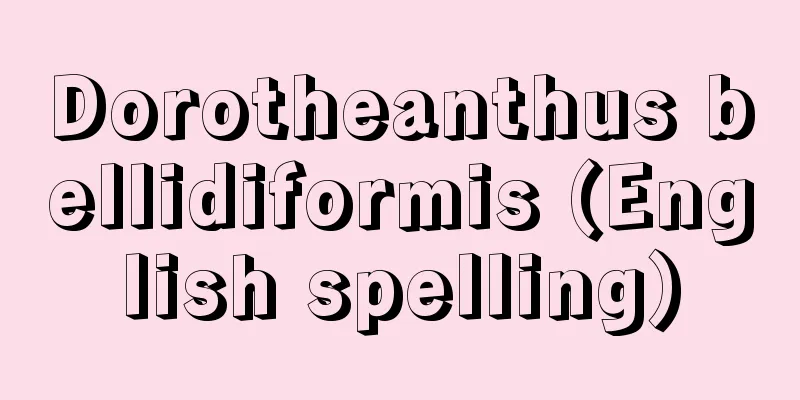Dario (English spelling) Rubén Dario

|
Nicaraguan poet. His real name was Félix Rubén Garcia Sarmiento. He was noticed as a prodigy in the region and was active in salons in the capital Managua and El Salvador. After learning about Hugo, the High-Temperament and Symbolist movements, he aimed to renew Spanish poetry, which had remained in the realm of Spanish Romanticism. He later named the similar movement that was sprouting in various parts of Latin America at the time "Modernism" and became its center. His "Blue", published in Chile in 1888, is a monumental work that shows the true independence of Latin American literature, consisting of fantastic short stories and poems. After traveling around Latin America while working as a diplomat and journalist, he traveled to Spain for the first time in 1892 and met Symbolist poets in Paris. The following year, he gathered the younger generation influenced by the High-Temperament movement in Buenos Aires to form a "Modernist" group and launched "American Review", which could be considered its journal. In 1896, he also published the prose work Rare Men, which features portraits of Poe, Blois, and Lecomte de Lille, and the collection of poems Vulgar Continuation. The latter, with its exotic vocabulary and new rhythm, is a work that marks the pinnacle of early modernism. Around the time of the Spanish-American War, his Latin American stance began to emerge. A masterpiece of this late modernism that could be called neo-romanticism is Song of Life and Hope (1905). Despite his enormous contributions to the renewal of Spanish poetry, he lived an unfortunate life, suffering from the loss of his wife, a failed remarriage, and alcoholism, before dying of illness in his home country. [Noya Fumiaki] "Dario" translated by Masamichi Arai (included in "World Famous Poetry Collection 14: Southern Europe and South America", 1959, Heibonsha) Source: Shogakukan Encyclopedia Nipponica About Encyclopedia Nipponica Information | Legend |
|
ニカラグアの詩人。本名はFélix Rubén Garcia Sarmiento。地方の神童として注目され、首都マナグアやエルサルバドルのサロンで活躍。ユゴー、高踏派、象徴派を知るとともに、スペイン・ロマン派の域にとどまっていたスペイン語詩の刷新を目ざすようになる。当時、中南米各地で芽吹いていた同様の動きを、彼はのちに「近代主義」と命名、自らその中心となる。1888年にチリで出版された『青』は、幻想的な短編と詩からなり、中南米文学の真の独立を示す記念碑的作品である。外交官や記者を務めながら中南米を回ったのち、92年、初めてスペインに渡り、パリで象徴派の詩人たちに会う。翌年、ブエノス・アイレスで高踏派の影響を受けた若い世代を集め「近代派」のグループを結成、その機関誌ともいうべき『アメリカ評論』を創刊する。さらに96年には同地で、ポー、ブロワ、ルコント・ド・リールらの肖像を描いた散文『希有(けう)な人々』および詩集『俗なる続唱』を出す。後者はエキゾチックな語彙(ごい)や新しい韻律など、前期近代主義の頂点にたつ作品である。アメリカ・スペイン戦争あたりを境目に、ラテンアメリカ主義の姿勢が現れる。新ロマン主義といえるこの後期近代主義の傑作が『生命と希望の歌』(1905)である。スペイン語詩の刷新において絶大な功績を残しながらも、妻との死別、再婚の失敗、アルコール中毒にかかるなど、不遇の生涯を送ったのち、故国で病没した。 [野谷文昭] 『荒井正道訳『ダリーオ』(『世界名詩集大成14 南欧・南米』所収・1959・平凡社)』 出典 小学館 日本大百科全書(ニッポニカ)日本大百科全書(ニッポニカ)について 情報 | 凡例 |
Recommend
Golden Cigarette
...However, it is thought that the term "enb...
One crime, one count principle
...Although this is rarely done in practice, &quo...
Kabukido Enkyo
…Several scripts, such as “Saruwaka Bandai no Eno...
Hiroharu Kato
Admiral. Born in Tokyo on October 2, 1870. Gradua...
Su Qin
A Chinese politician and lobbier during the Warri...
Sex hormones
Sex hormones are secreted from the gonads of both...
Kanjoshi - Kanjoshi
…It is the junction of the Jingha Line (Beijing-H...
Asuwa Prefecture - Asuwa
…In the Middle Ages, the northwestern part of the...
Grechetto
…Italian Baroque painter, draughtsman and copperp...
Parler, P. (English spelling) ParlerP
…The first of the family, Heinrich von Gmünd (dat...
Tecticeps japonicus (English spelling) Tecticeps japonicus
...The four-spotted ground beetle Sphaeroma retro...
Udonaceae - Udonoki
...A genus of about 60 species in the family Euon...
Akahachi-Hongawara Rebellion
...In the 15th century, chiefs arose in various p...
Pyroxenoid
It is a mineral with a chemical composition of met...
Lepidosauria
...Their habitat was expanded to include land, se...









